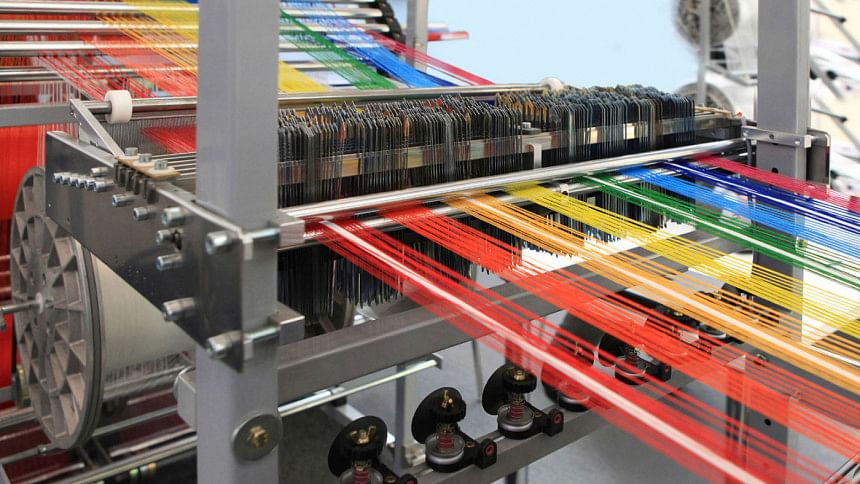We must modernise textile engineering education in Bangladesh

The present government has correctly emphasised the need to develop and expand technical education in the country. It has set up various engineering universities and some engineering colleges, which provide BSc level courses in various technical subjects. The roles of these colleges are fully controlled and managed by the universities they are affiliated with. Every year, many students get admitted to the government engineering colleges with the dream of contributing to the economy and the country. How effective are these colleges in making these dreams come true? The general contention is that they provide very mediocre education that does not fulfill the needs of the students.
The textile sector is the source of over 80 percent of foreign exchange earnings in Bangladesh; it is called the country's economic backbone. The garment industry's growth rate in 2019 was 11.49 percent, compared to 7.8 percent in 2017. However, growth has slowed down due to Covid-19. To continue the growth trend, the government has set up a few textile colleges, including a textile university. However, challenges remain, which we bring to the fore to address key issues that are critical to improving the textile engineering colleges.
There are seven textile colleges in Bangladesh; several more are under construction. Each college trains about 480 students. In Pabna Textile Engineering College, it was found that there are four assistant professors, eight lecturers, six t-instructors, and a few other teachers, but no professors. The conditions of the new colleges are deplorable.
The first problem in every college is a crisis of teachers. Where one teacher is recommended for every 12 engineering students, there are too few teachers in service to meet the student-teacher ratio. Thus, guest teachers conduct many classes. Some colleges have been upgraded from offering Diploma to BSc degrees, where Diploma teachers are being promoted to take classes. Although new teachers are hired occasionally, additions to the teaching staff are negligible compared to the need. Lacking adequate training, despite their best efforts, these teachers cannot give the students their best.
The appointment of departmental teachers is critical for the development of any educational institution. However, there is a crisis of departmental teachers and technicians in textile education. Students cannot make much progress due to the lack of seminars, as well as required information and useful guidelines. Consequently, they are very frustrated, and many students want to pursue higher education abroad.
Regarding laboratories, students cannot do their thesis work properly due to lack of equipment and budgetary allocations for laboratory research. There is no equipment in the laboratories that deals with modern textiles and technical textiles like microfibre, fibre composition, and modern dyeing. Thus, thesis work is based on using conventional instruments. How is it possible to improve technical education in the country if we continue in this way?
Last year, students of certain institutions pursued their theses on fibre composition, but it was not practical due to the lack of modern laboratory equipment. Where such equipment is available, research is hampered for a lack of skilled technicians. Thus, the progress of the nation's engineering colleges and the quality of the graduates are questionable. Where research is the lifeblood of an engineering institution, these colleges do not have a budget for research, nor do they have trained technicians and faculty. One wonders why a decent budget is not allocated to conduct research in our engineering colleges.
Let us also take a glance at the curriculum. The truth is that many of the subjects are old-fashioned. Although the industries have become modern in keeping pace with the times, the curriculum has remained the same. Students also have a two-month long internship in the last semester and a "mill inspection" every semester to improve their technical capacity. These experiences could be improved in great measure. Graduating students thus face a very embarrassing situation when they land their first jobs in the industry: they lack adequate and modern knowhow.
The present world also demands a move from traditional textile to technical textile. The entire sector needs to change in tandem with the needs of the rest of the world. And for this, we need a rich technical education system based on research. About four million people are directly or indirectly involved in this sector in Bangladesh, where only three lakh people were employed in 2000. In most of the factories, foreign engineers occupy the top positions due to a lack of skilled local engineers. By developing local competence, it can reduce the country's reliance on foreign engineers and enable the locals to play a pivotal role in taking the country forward. Support from the textile industry through joint programmes and funding support would be the icing on the cake.
Admay Saney studies at Pabna Textile Engineering College. Dr Andaleeb is Distinguished Professor Emeritus, Pennsylvania State University and former Vice Chancellor, BRAC University. Dr Andaleeb is at [email protected].

 For all latest news, follow The Daily Star's Google News channel.
For all latest news, follow The Daily Star's Google News channel. 



Comments